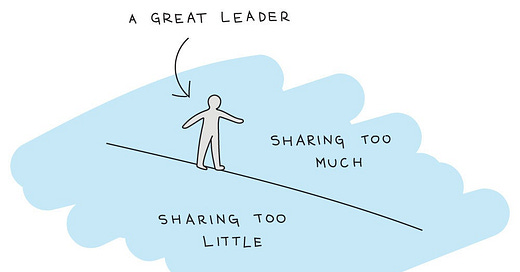Emotions at work can be a sticky subject. There’s a school of thought, still widely subscribed to, that emotions don’t belong at work. You should leave them at the door when you walk in.
And yet as humans, we are inherently emotional creatures. I’m not sure it’s even possible to leave emotions at the door and feel nothing. So what this tends to turn into is an effort to suppress emotion, and certainly not to show it to anyone else.
In my view, that’s not healthy either. A little like trying to hold a beachball underwater, it is hard work and takes a chunk of your mental and emotional energy to keep all of that suppressed. And when you stop paying attention? It pops out when you least expect, and often when you don’t intend.
“Success depends on how to let emotion into the workplace without letting it run wild.”
Liz Fosslein and Mollie West Duffy
It’s about becoming aware of, and then intentionally managing your emotions for their impact on you and those around you.
There are a few things you can practice to help you do this.
One: Build awareness
If you’ve spent a long time suppressing emotion you might not be very fluent at distinguishing how you really feel. Are you frustrated, confused, vulnerable, nervous or fragile? Are you excited, surprised, accepting, happy, curious, or motivated? Try regularly checking in with yourself to see how you are feeling in that moment,
Two: Be curious
When we are in states of heightened emotion it can be easy to be driven by it. However, building the skill of curiosity around it can help separate us from the feeling, and also find compassion for it. Try asking yourself “What’s behind this emotion?”
Three: Consider reframing
For some emotions, reframing can help. Reframing nervousness as anticipation or excitement. Reframing jealousy as a pointer to what you really want. Reframing discomfort as a sign of growth. This isn’t to pretend the emotion isn’t there, but instead using curiosity to bring a different perspective.
Four: Share, with care
A little vulnerability can go a long way. As a leader, acknowledging you’re having a tough day can avoid your team jumping to conclusions they have messed up. Equally, sharing when you’re a little nervous can help to normalise that and create space for your team to stretch themselves beyond what is comfortable too. It’s not about oversharing, but creating a space to be human.
Sweating the small stuff
This week: Be responsible for your emotions
Remember emotions, like yawns, are contagious. In Radical Candor, Kim Scott recalls a morning when a report told her, “I know what kind of day I’m going to have by the kind of mood you’re in when you walk in the door.”
Before you go into the office, or get onto a call, take a deep breath and check in. Notice your mood, your overall energy. If there’s something bugging you, can you let it go? If not, is it appropriate to acknowledge rather than pretend it doesn’t exist? Wherever you’re at, practice being intentional about being with the emotion, so you’re being responsible for it.
I’d love to know your thoughts. Comment below and start the conversation.
If you’ve enjoyed this, hit subscribe to receive my future posts direct to your inbox.
Or, please do share with friends, colleagues or anyone you think would enjoy this using the button below.




